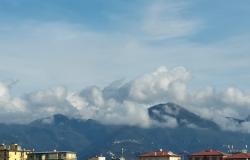Italy's Most Breathtaking Coastal Trail? It's on the Amalfi Coast
ITA:

Use player to listen to Italian version
Among Italy’s most scenic coastal walking trails, the nine-kilometer (5.6 miles) ‘Pathway of the Gods’ winds its way through vertical cliffs and man-made terraces hundreds of meters above the sparkling waters of the Amalfi Coast.
It begins at the main square, Piazza Capasso, in the tiny village of Bomerano, where you’ll find signs for ‘Sentiero degli Dei’ (CAI n.327), and ends in Nocelle, just above Positano. It’s where the Lattari mountains of the Sorrentine peninsula descend into the blue of the Mediterranean sea.
Mediterranean scrub and vines are everywhere; there’s a unique type of grape produced here called "Pede 'e Palomma" (dove’s foot), imported by the Greeks thousands of years ago when the area was settled by them. Citrus fruits, figs and apple trees are also cultivated in abundance.
For centuries, this path was the only route connecting the villages of the Amalfi Coast, and was also used for the transportation of goods, before the current coastal state road was built by the Bourbons. It then continued to be used as a mule track, and was rediscovered and popularized in recent years as a hiking trail.
The name given to the path stems from the legend that says that it was the road taken by Greek gods to save Ulysses from the sirens living on Li Galli, an archipelago of three islands between Capri and Positano.
The Sentiero degli Dei mesmerized even famous travelers, some on their Grand Tour, such as Goethe and D.H Lawrence; and it’s said it also gave refuge to smugglers and bandits, given its inaccessibility.
It’s a trail where you can experience the rural, farming culture that is typical of the area, where the locals, especially the elderly, still live and work in close contact with the rhythms of nature.
Tra i sentieri escursionistici costieri più panoramici d'Italia, il Sentiero degli Dei, che misura nove chilometri, si snoda attraverso pareti verticali e terrazzamenti, a centinaia di metri sopra le scintillanti acque della Costiera Amalfitana.
Ha inizio a Piazza Capasso, la piazzetta principale del piccolo villaggio di Bomerano, dove sono presenti le indicazioni per il 'Sentiero degli Dei' (CAI n.327), e termina a Nocelle, appena sopra Positano. È il luogo dove i monti Lattari della penisola sorrentina scivolano nel blu del Mediterraneo.
La macchia mediterranea e le viti sono ovunque; qui viene prodotto un tipo unico di uva chiamato "Pede 'e Palomma", importato dai Greci migliaia di anni fa quando l'area era da loro colonizzata. Anche agrumi, fichi e meli sono coltivati in abbondanza.
Per secoli, questo percorso fu l'unica via che collegava i villaggi della Costiera Amalfitana, ed era anche utilizzato per il trasporto di merci, prima che l'attuale strada costiera fosse costruita dai Borboni. Continuò poi a essere utilizzato come mulattiera ed è stato riscoperto negli ultimi anni, per divenire famoso come sentiero escursionistico.
Il nome dato al percorso deriva dalla leggenda secondo cui fu la strada intrapresa dagli dei greci per salvare Ulisse dalle sirene che vivevano su Li Galli, un arcipelago di tre isole tra Capri e Positano.
Il Sentiero degli Dei ha affascinato anche viaggiatori famosi, come Goethe e D.H Lawrence; e si dice che abbia dato rifugio anche a contrabbandieri e banditi, data la sua inaccessibilità.
È un percorso in cui è possibile sperimentare la cultura rurale e contadina tipica della zona, dove la gente del posto, soprattutto gli anziani, vivono e lavorano ancora a stretto contatto con i ritmi della natura.











